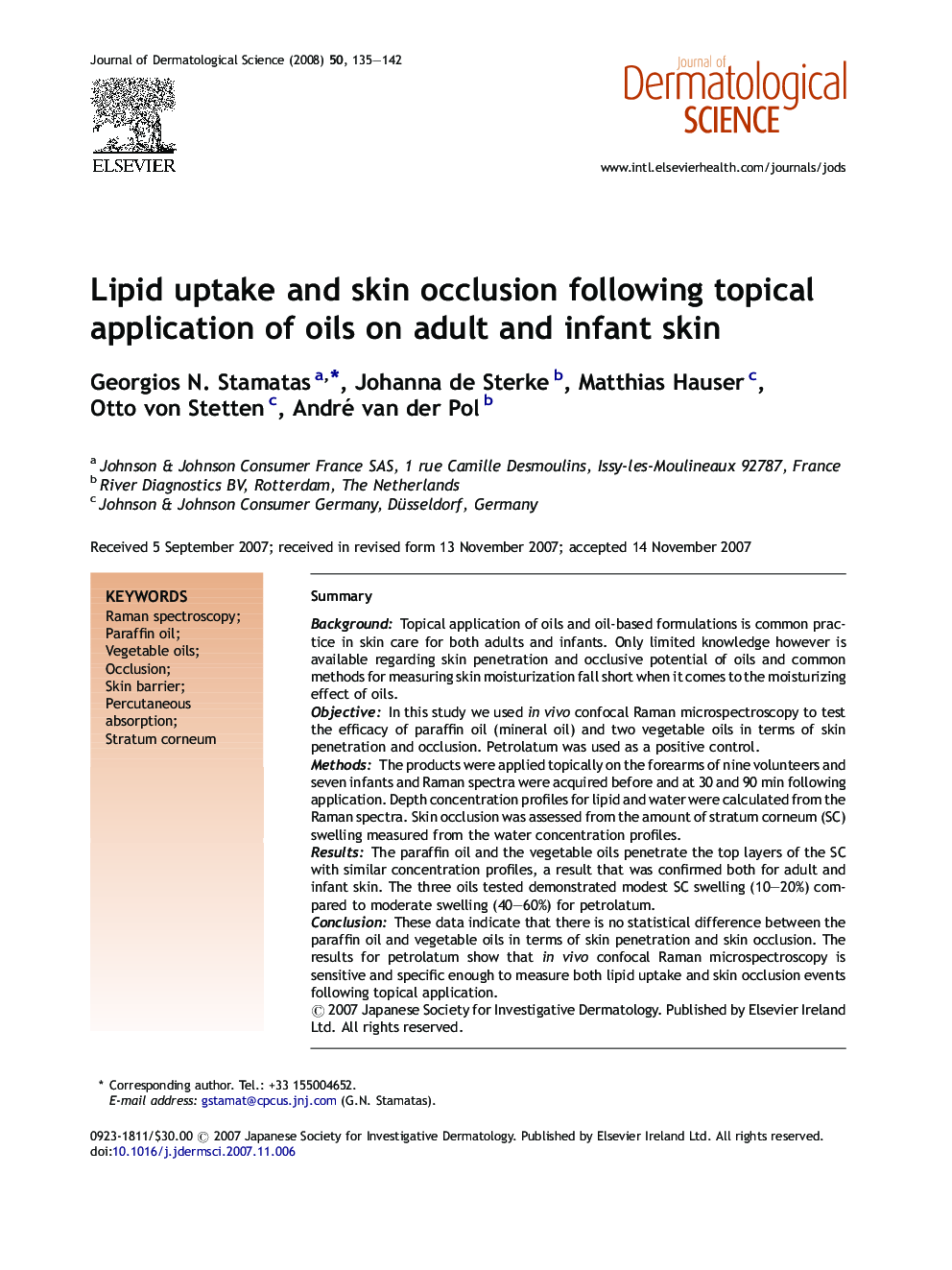| Article ID | Journal | Published Year | Pages | File Type |
|---|---|---|---|---|
| 3214197 | Journal of Dermatological Science | 2008 | 8 Pages |
SummaryBackgroundTopical application of oils and oil-based formulations is common practice in skin care for both adults and infants. Only limited knowledge however is available regarding skin penetration and occlusive potential of oils and common methods for measuring skin moisturization fall short when it comes to the moisturizing effect of oils.ObjectiveIn this study we used in vivo confocal Raman microspectroscopy to test the efficacy of paraffin oil (mineral oil) and two vegetable oils in terms of skin penetration and occlusion. Petrolatum was used as a positive control.MethodsThe products were applied topically on the forearms of nine volunteers and seven infants and Raman spectra were acquired before and at 30 and 90 min following application. Depth concentration profiles for lipid and water were calculated from the Raman spectra. Skin occlusion was assessed from the amount of stratum corneum (SC) swelling measured from the water concentration profiles.ResultsThe paraffin oil and the vegetable oils penetrate the top layers of the SC with similar concentration profiles, a result that was confirmed both for adult and infant skin. The three oils tested demonstrated modest SC swelling (10–20%) compared to moderate swelling (40–60%) for petrolatum.ConclusionThese data indicate that there is no statistical difference between the paraffin oil and vegetable oils in terms of skin penetration and skin occlusion. The results for petrolatum show that in vivo confocal Raman microspectroscopy is sensitive and specific enough to measure both lipid uptake and skin occlusion events following topical application.
